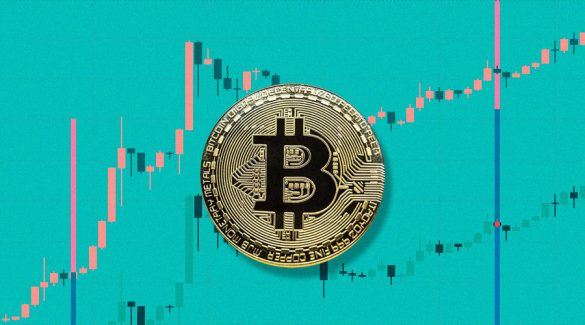Bitcoin is a decentralized digital currency that operates on a peer-to-peer network. It was created in 2009 by an unknown person or group of people using the pseudonym Satoshi Nakamoto. One of the unique features of Bitcoin is its limited supply, with a maximum of 21 million bitcoins that can ever be mined. This limit is built into the Bitcoin protocol, and the creation of new bitcoins is controlled by a process known as the Bitcoin halving. This article will explore Bitcoin halving and its implications for the Bitcoin ecosystem.
What is the Bitcoin Halving?
The Bitcoin halving is an event that occurs approximately every four years when the number of bitcoins awarded to miners for verifying transactions on the network is cut in half. This process is programmed into the Bitcoin protocol and is designed to limit the supply of bitcoins over time. The first Bitcoin halving occurred in 2012, and the most recent occurred in May 2020.
The Bitcoin halving is a critical event for the Bitcoin ecosystem because it significantly impacts the supply of bitcoins. The halving reduces the rate at which new bitcoins enter the market by reducing the number of bitcoins awarded to miners. This reduces the inflation rate of Bitcoin and, in theory, increases the value of existing bitcoins.
The Implications of the Bitcoin Halving
The Bitcoin halving has several implications for the Bitcoin ecosystem, including:
- Reduction in Inflation: One of the most significant implications of the Bitcoin halving is a reduction in the inflation rate of Bitcoin. The inflation rate is the rate at which the supply of bitcoins increases, and the halving reduces this rate by half. This reduction in inflation could potentially increase the value of existing bitcoins because they become relatively scarcer.
- Miner Revenue: The Bitcoin halving has a direct impact on the revenue earned by miners. When the halving occurs, the number of bitcoins awarded to miners is cut in half, which means that their revenue from mining is also reduced. This revenue reduction can significantly impact the profitability of mining operations, and some miners may be forced to shut down their operations if they are not profitable.
- Price Volatility: The Bitcoin halving can also increase price volatility in the short term. This is because the reduction in supply may create a temporary shortage of bitcoins, which can increase the price. However, the price may stabilize once the market adjusts to the new supply level.
- Security: The Bitcoin halving can also impact the security of the network. As the block reward is reduced, miners may become less incentivized to continue mining, which could potentially lead to a decline in the network’s overall hash rate. A decline in the hash rate could make the network more susceptible to 51% attacks.
- Adoption: The Bitcoin halving can also have an impact on adoption rates. As the inflation rate decreases, it could make Bitcoin more attractive as a store of value. This, in turn, could lead to increased adoption of Bitcoin as a form of digital gold.
Historical Performance of Bitcoin After Halving Events
There have been three Bitcoin halving events to date, and each one has significantly impacted the price of Bitcoin. In the year following each halving, the price of Bitcoin has increased substantially.
The first halving occurred in November 2012, and in the following year, the price of Bitcoin increased from around $12 to a peak of around $1,100 in November 2013. The second halving occurred in July 2016, and in the following year, the price of Bitcoin increased from around $650 to a peak of around $20,000 in December 2017. The most recent halving occurred in May 2020, and in the following year, the price of Bitcoin increased from around $8,000 to a peak of around $64,000 in April 2021.
While past performance is not necessarily indicative of future results, the historical performance of Bitcoin after halving events suggests that Bitcoin halving can have a significant impact on the price of Bitcoin. However, it is important to note that other factors, such as market sentiment, regulatory developments, and technological advancements, can also have an impact on the price of Bitcoin.
The Future of Bitcoin Halvings
The next Bitcoin halving is scheduled to occur in 2024, and it is expected to reduce the block reward from 6.25 bitcoins to 3.125 bitcoins. This reduction in the block reward will continue to limit the supply of bitcoins and reduce the inflation rate of Bitcoin.
As Bitcoin continues to mature as an asset, the impact of halving events on the ecosystem may change. The current halving cycle has seen a significant increase in institutional adoption and investment in Bitcoin, which could potentially change the dynamics of the market. Additionally, as the Bitcoin network continues to scale and improve, the impact of the halving on miner revenue and network security may also change.
Conclusion
The Bitcoin halving is a critical event for the Bitcoin ecosystem that has significant implications for the supply, price, and adoption of Bitcoin. While the impact of the halving on the ecosystem may change over time, it remains an essential aspect of the Bitcoin protocol that helps to maintain the scarcity and value of Bitcoin. As the Bitcoin ecosystem continues to evolve, it will be interesting to see how the halving events continue to impact the market and the adoption of Bitcoin as a digital asset.
